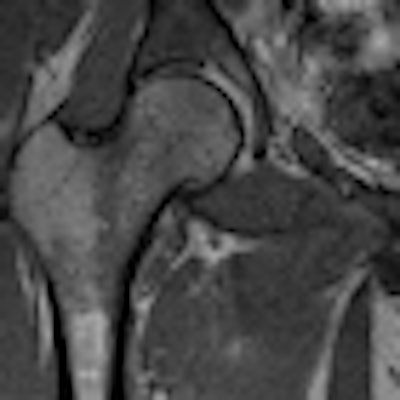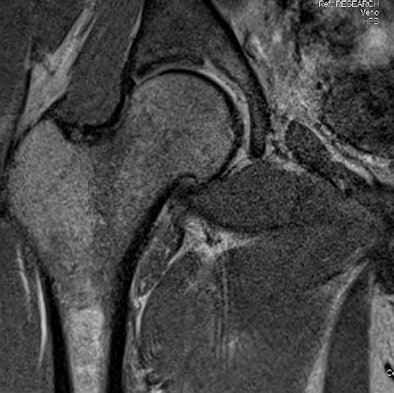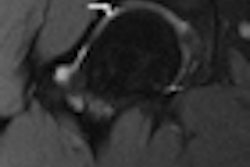
MRI can be very useful in evaluating the pathology of hip labral tears in asymptomatic patients and determining what treatment -- if any -- is needed, according to a study from Steadman Philippon Research Institute in Vail, CO.
The results support the importance of correlating clinical signs and symptoms with MRI findings when considering surgery or other treatment for patients with hip disorders, said lead author Dr. Bradley Register. The study was presented at the American Orthopaedic Society for Sports Medicine (AOSSM) Specialty Day in San Francisco.
"We noticed that a large number of our patients had MRIs showing labral tears that didn't seem to be causing the patients any problems," Register said. "If someone comes to the office with an MRI that shows a labral tear, but their physical history leads you to believe that the problem is coming from a herniated disk and other pain coming from the lower back, treatment for a labral tear is not going to make a patient any better."
Previous research has shown a high prevalence of hip pathology in athletes with groin pain, Register and colleagues wrote in an abstract. However, the prevalence of abnormal MRI findings in an asymptomatic population has yet to be defined.
The study enrolled 45 volunteers with no history of hip pain, symptoms, injury, or surgery. The participants included 27 men and 18 women with an average age of 37.8 years (range, 15 to 66 years). All 45 subjects underwent a 3-tesla MRI scan (Siemens Healthcare).
"We also included 19 MRIs from patients who had symptomatic labral tears or people who had symptomatic hips," Register added. "So the radiologists who were reading these MRIs did not know whether the patients had symptoms or no symptoms."
The extremity side evaluated by MRI was selected randomly, and all MRI scans were reviewed by three separate musculoskeletal radiologists. An abnormal finding was considered positive when a majority of radiologists agreed on the pathology.
"We had the radiologists look for several findings, including labral tears, chondral defects, osseous bumps, fibrocystic changes of the head-neck junction, and subchondral cysts, among other conditions," Register said.
In their analysis, the group discovered a variety of abnormalities: Labral tears were the most common, found in 69% of hips, followed by chondral defects in 24%. Fibrocystic changes of the head-neck junction were found in 22%, osseous bumps in 20%, and subchondral cysts in 16%. Overall, the MR images revealed abnormalities in 73% of the asymptomatic volunteers.
In addition, subjects older than 35 years were 14 times more likely to have a chondral defect and 17 times more likely to have a subchondral cyst. No other joint pathology was associated with age, the researchers noted. Men were 8.5 times more likely to have an osseous bump compared to women, with no other joint pathology related to gender.
 |
| 3-tesla coronal MR image shows a superolateral acetabular labral tear. Image courtesy of Dr. Bradley Register. |
"The best way we can explain why we found a higher number of labral tears [than previous studies] is that 3-tesla MRI is more sensitive in picking up small tears that may not be visible through arthroscopy," Register said. "With 3-tesla MRI, we are not doing a contrast injection, either. Traditionally, physicians have used arthograms and gadolinium injections in their MRIs to look for labral tears, but recent studies have shown that that is not necessary with 3-tesla MRI."
The researchers are considering a follow-up study to try to determine what percentage of these patients develop hip pain over time. "We don't really know if these labral tears are part of the normal aging process or if it is a presymptomatic finding," he added.
During the study, the researchers conducted physical exams and collected x-rays of all 45 patients. "We are still ironing out the data, and we will try to correlate these MRI findings to see if there is any difference in range of motion in these patients, and also look at certain x-ray parameters to see how they compare to patients with labral tears," Register said.


.fFmgij6Hin.png?auto=compress%2Cformat&fit=crop&h=100&q=70&w=100)





.fFmgij6Hin.png?auto=compress%2Cformat&fit=crop&h=167&q=70&w=250)











